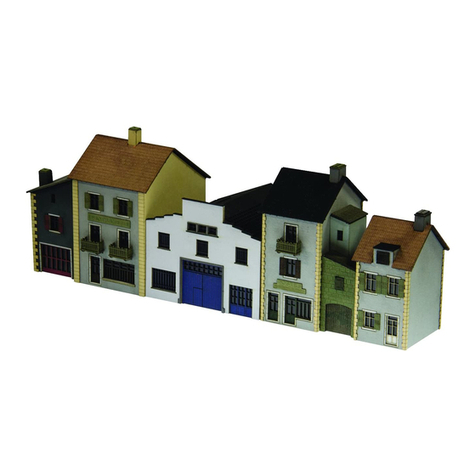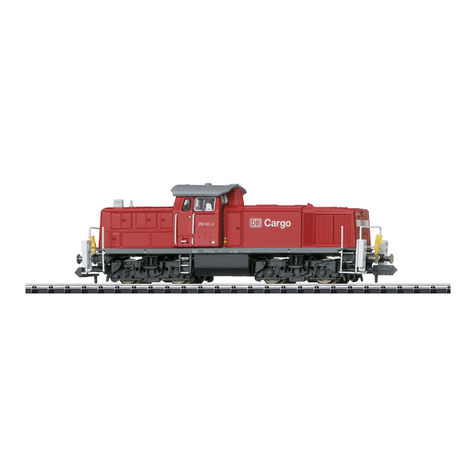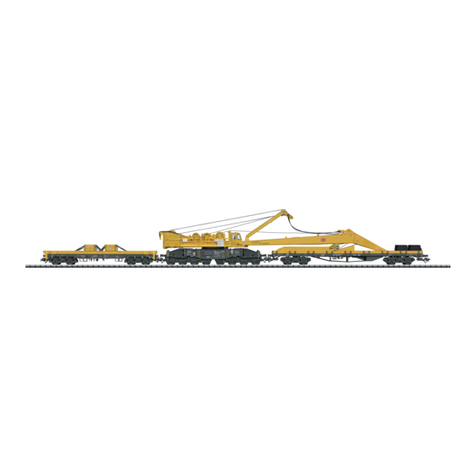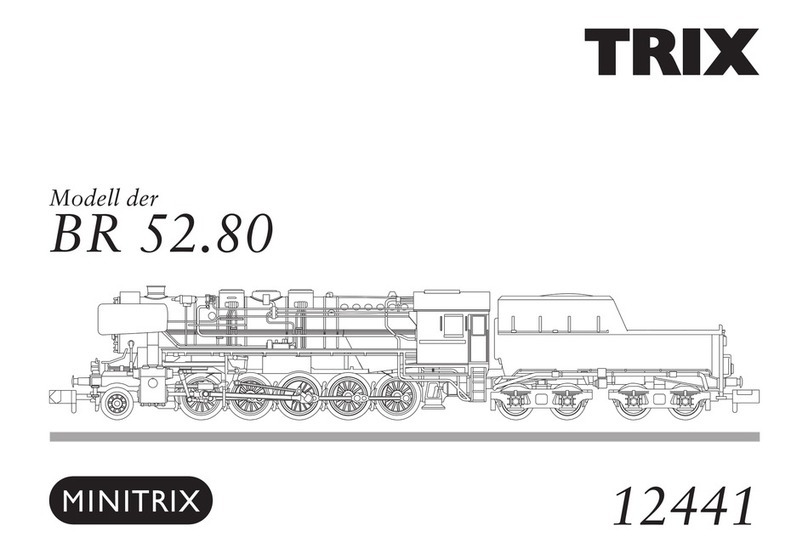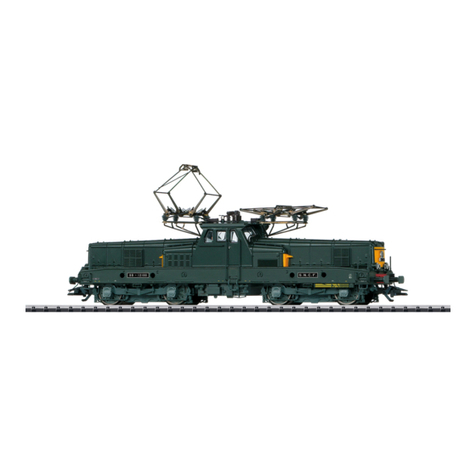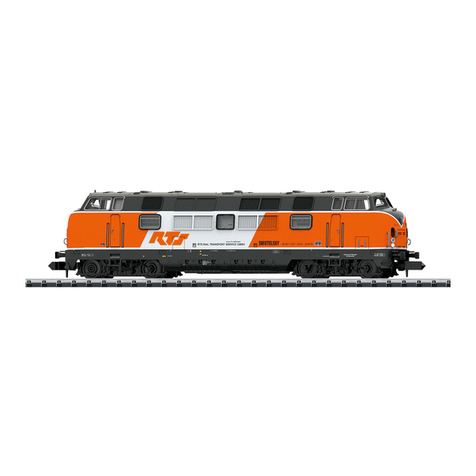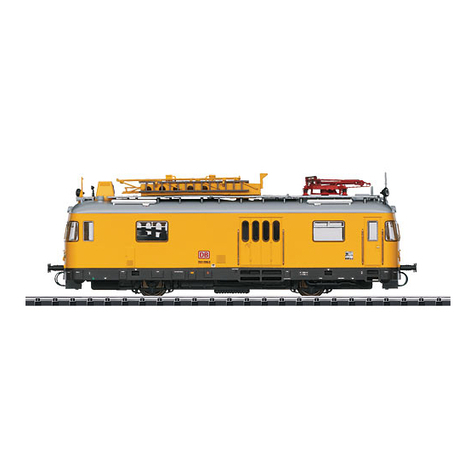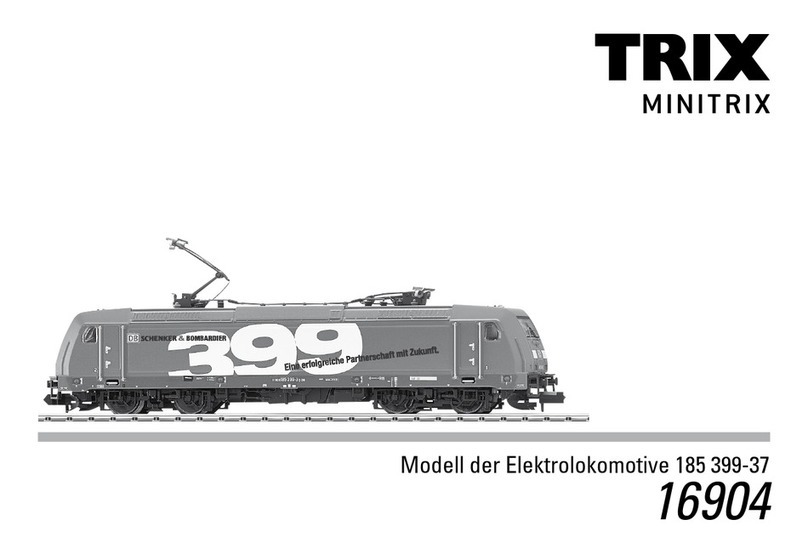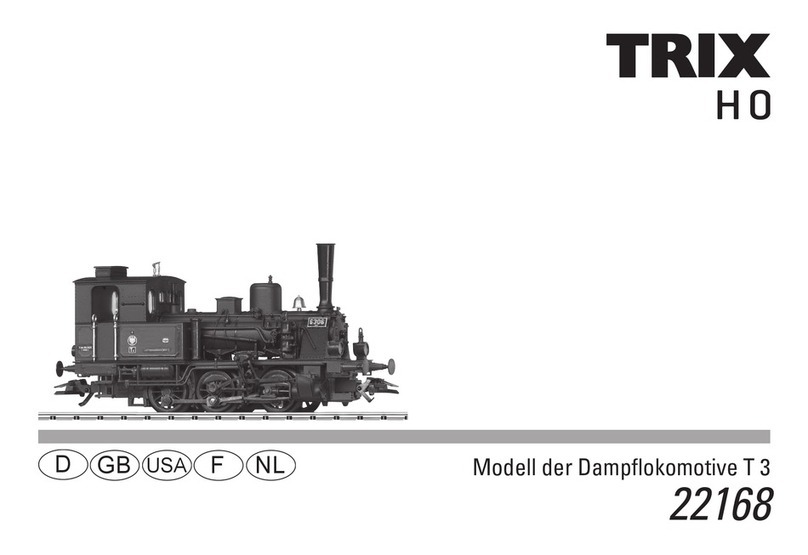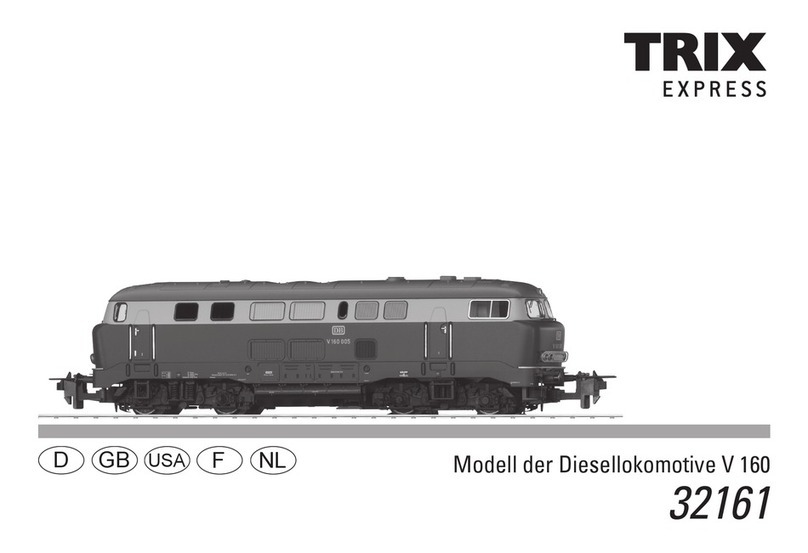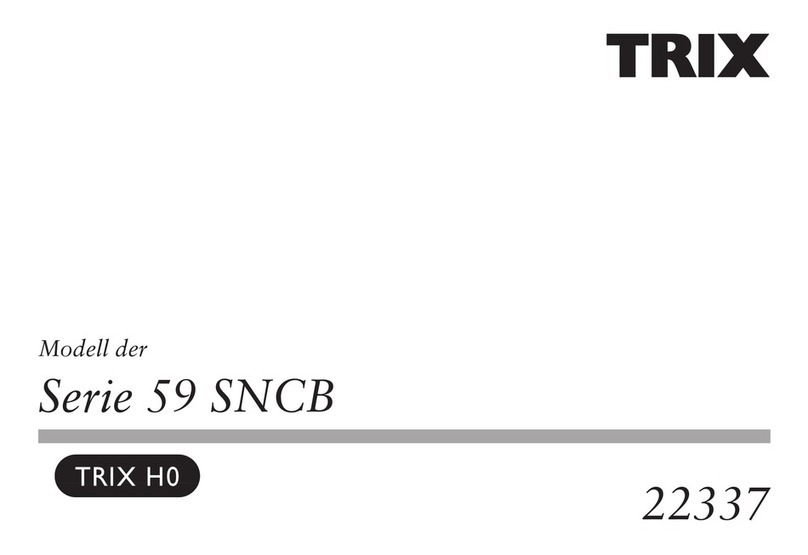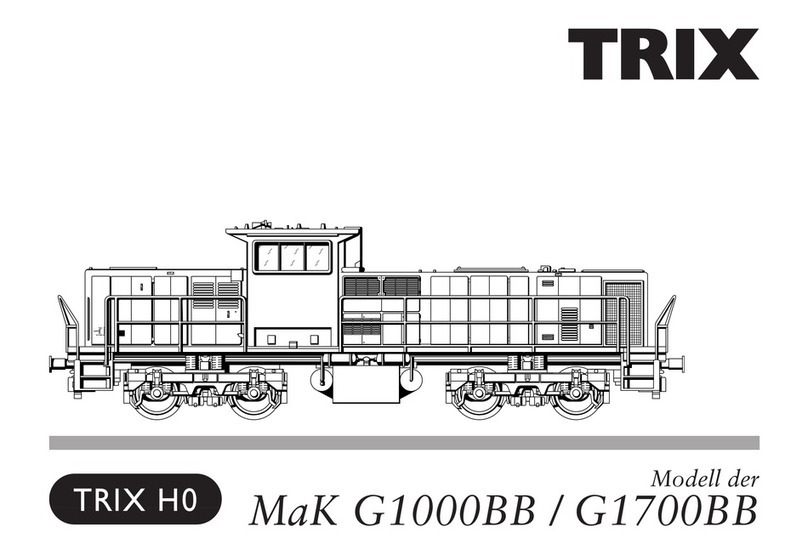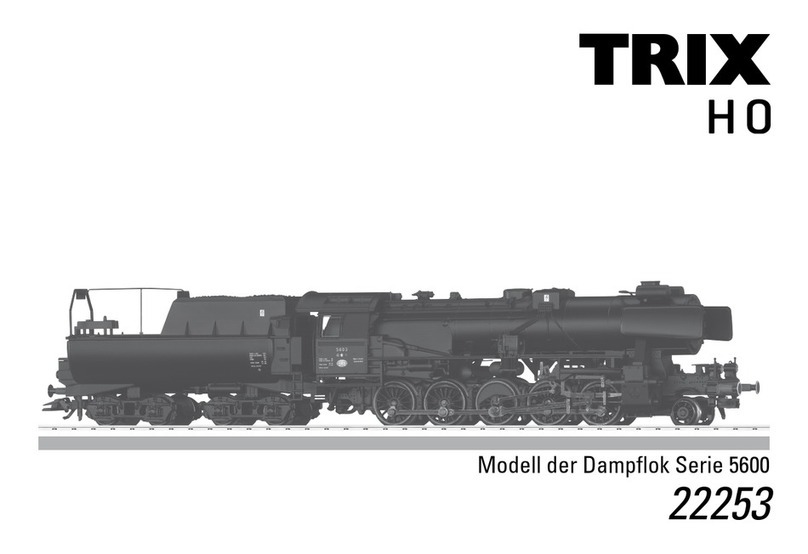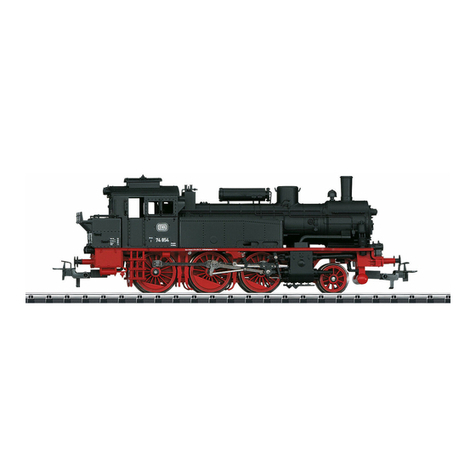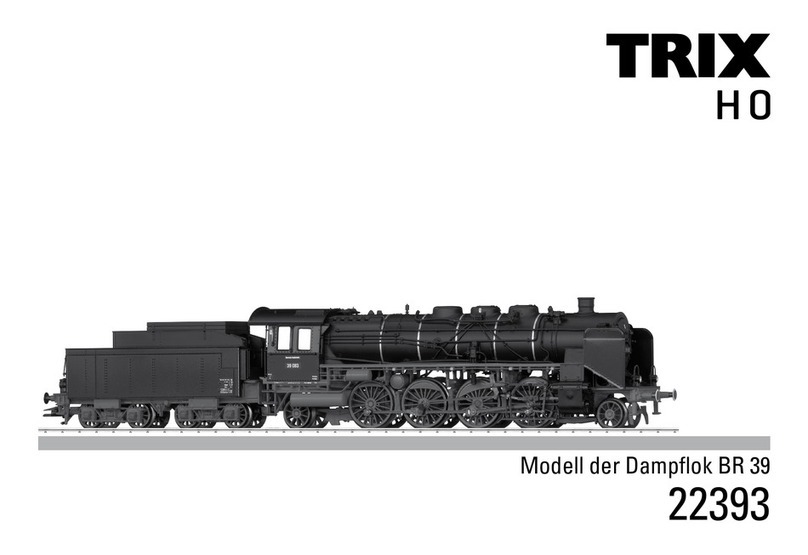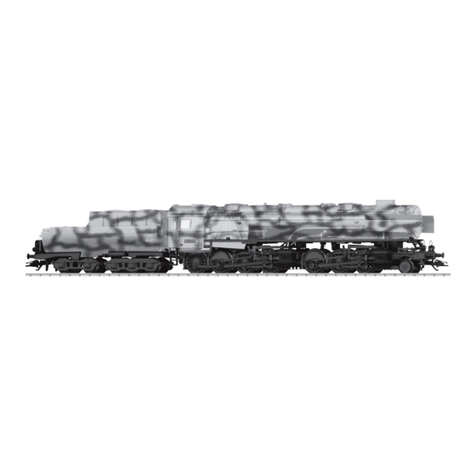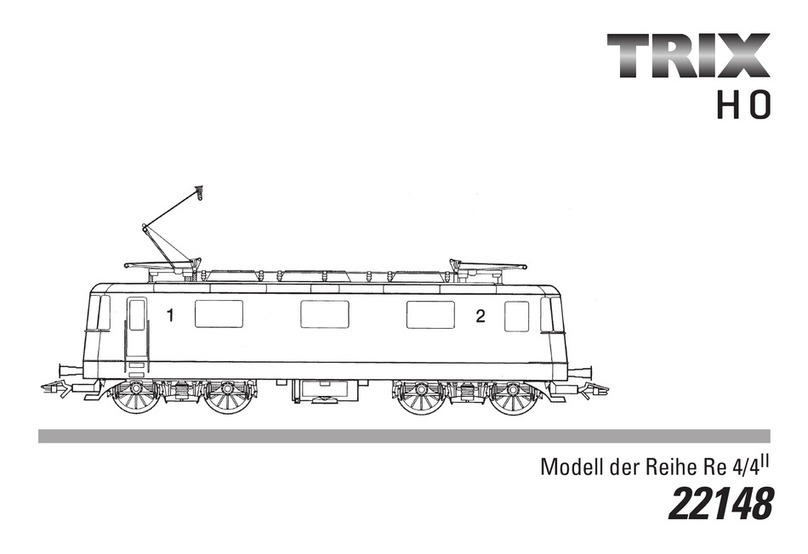
5
Informations concernant la locomotive réelle
En tant que dernière «Locomotive à vapeur» dite «aux composants
partagés», c’est peu de temps avant le début de la deuxième guerre
mondiale que furent créées les machines de la Série 50. En avril
1937, le Ministère des transports du Reich (RVM) donna mission à
l’administration centrale de la Reichsbahn (RZA) de concevoir une
locomotive puissante pour trains de marchandises circulant sur des
lignes secondaires, entre autres en remplacement de la locomotive
à vapeur pour train de marchandises Eh2, de la Série 57.10-40 (G 10
prussienne). Elle devait tirer dans la plaine un train de marchan-
dises de poids moyen, être capable d’emprunter des voies courbes
d’un rayon de 140 m et pouvoir également être mise en œuvre sans
difficultés, avec une masse par essieu d’environ 15 t, sur des lignes
secondaires avec un matériel de voie léger. La vitesse maximale de
80 km/h apparut suffisante. Dans la mesure où dans de nombreuses
gares terminales, soit aucune plaque tournante n’était disponible,
soit celles-ci étaient trop courtes, la machine devait fonctionner à
la même vitesse dans les deux sens. C’est la raison pour laquelle
il fut prévu d’équiper le tender d’une paroi de protection en vue
de protéger le personnel de conduite de la locomotive au moment
de la marche arrière. L’administration centrale de la Reichsbahn
prévit tout d’abord une locomotive 1‘D (Série 46), car on doutait de
l’aptitude d’une la 1’E à garantir aussi bien la grande vitesse exigée
en marche arrière que la puissance nécessaire au crochet de
traction. Avec cette machine, les charges d’essieu exigées ne pou-
vaient toutefois pas être atteintes et c’est ainsi qu’il ne restait que la
possibilité de construire une locomotive à cinq essieux accouplés
avec essieu monté avant. La Série 50 ainsi créée allait ensuite deve-
nir la construction la plus heureuse de la Deutsche Reichsbahn, car
la machine qui développait environ 1.600 CV et qui avait une rapidité
d’environ 80 km/h est rapidement devenue une locomotive suscepti-
ble d’être mise en œuvre de manière universelle, robuste et fiable.
Informatie van het voorbeeld
De machines van de serie 50 ontstonden kort voor het begin van
de Tweede Wereldoorlog als laatste zogenaamde “eenheids-
stoomlocs”. In april 1937 ontving het Reichsbahn-Zentralamt
(RZA) van het Reichsverkehrs-Ministerium (RVM) de opdracht
om een krachtige goederenlocomotief voor nevenlijnen te ont-
werpen. Deze moest onder andere de Eh2-goederenstoomlocs
van de serie 57.10-40 (Pruisische G 10) gaan vervangen. De
loc moest op het vlakke land een middelzware goederentrein
kunnen trekken, bogen met een straal van 140 m doorrijden en
met een belasting per as van ongeveer 15 ton ook probleemloos
inzetbaar zijn op nevenlijnen met een lichte bovenbouw. Een
maximumsnelheid van 80 km per uur zou voldoende zijn. Omdat
op veel kopstations ofwel helemaal geen draaischijven ofwel te
korte draaischijven aanwezig waren, moest de machine echter in
beide richtingen dezelfde snelheid kunnen ontwikkelen. Daarom
werd de tender van een wand voorzien, die het locpersoneel bij
het achteruitrijden bescherming moest bieden. Het RZA plande in
eerste instantie een 1‘D-locomotief (serie 46), omdat men een 1‘E
noch de vereiste achteruitrijsnelheid, noch het vereiste vermo-
gen aan de trekhaak toevertrouwde. Met deze machine was het
echter niet mogelijk om binnen de voorgeschreven belasting per
as te blijven, dus bleef alleen de constructie van een vijfvoudig
gekoppelde machine met vooras over. En zo leverde Henschel
van april tot juli 1939 de eerste twaalf locomotieven met stalen
vuurkist, een ketel van gelegeerd staal, een tweecilinder-over-
verhitteraandrijving met Wagner-oververhitter en een keteldruk
van 16 bar. De zon ontstane serie 50 zou al snel als de meest
succesvolle constructie van de Deutsche Reichsbahn worden,
want de 80 km per uur rijdende machine met een vermogen
van 1.600 pk ontwikkelde zich ras tot een universeel inzetbare,
onverwoestbare en betrouwbare locomotief.
